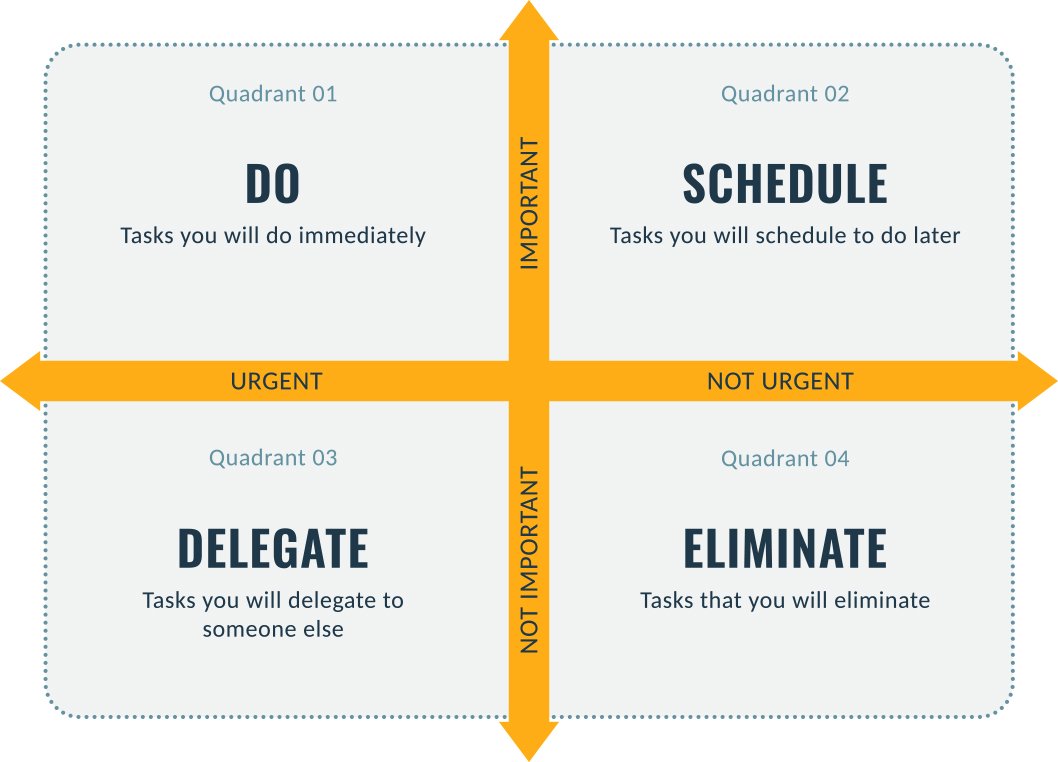URGENT VS IMPORTANT
How do you plan your daily tasks of which ones you should take action?
- Now! Yes, Right now.
- Tomorrow
- Next week
The Eisenhower Matrix is a decision model with 4 boxes. It helps you prioritize tasks by urgency and importance, sorting out less urgent and less important tasks which you should either delegate or not do at all.
Urgent tasks are those that require immediate action. For instance, returning an email from a client would be considered an urgent task. Important tasks, on the other hand, are tasks that needed to be completed but could be scheduled for another time.
Read more on https://www.developgoodhabits.com/eisenhower-matrix/
Another tip of finding out whether your priorities are aligning with your stakeholders: by directly asking your stakeholders of their priorities.
Credits to: Sinoway & Jack Welch
PERFORMANCE MANAGEMENT / WHERE SHOULD YOU DEVELOP?
Sinoway’s four categories include:
- Stars are the employees we all love — the ones who “do the right thing” the “right way”.
- High potentials are those whose behavior we value — who do things the right way but whose skills need further maturation or enhancement. With training, time, and support, these people are your future stars.
- Snakes fail on both counts. Their behavior doesn’t align with the cultural aspirations of the organization and their performance is mediocre.
- Company Killers are a real threat. These employees perform well but in a manner that is at cross-purposes with the desired organizational culture.
CONTINUOUS IMPROVEMENT
This straightforward approach calls for constant interaction and repetition among the steps to support continuous improvement.
Step 1: Plan
- Identify needs and opportunities
- Set expectations of stakeholders involved
- Define your basic plan (when / what / who) to meet the needs
Step 2: Do
- Develop procedures and tools to fulfill objectives and meet the plan
- Develop and provide training relevant to the people involved
- Follow the procedures, processes, and tools
Step 3: Check
- Assess our performance to determine if we met objectives and targets
- Identify any “root” causes
- Determine corrective actions
Step 4: Act
- Determine what, if anything, needs to be changed
- Identify specific adjustments
- Determine if we stay with our current plan or if we want to take on anything else
7 STEPS TO EFFECTIVE DECISION MAKING
Step 1: Identify the decision
Try to clearly define the nature of the decision (goal) you must make. This first step is very important.
Step 2: Gather relevant information
Collect some pertinent information before you make your decision: what information is needed, the best sources of information, and how to get it.
Step 3: Identify the alternatives
You can also use your imagination and additional information to construct new alternatives. In this step, you will list all possible and desirable alternatives.
Step 4: Weigh the evidence
Draw on your information and emotions to imagine what it would be like if you carried out each of the alternatives to the end. Evaluate whether the need identified in Step 1 would be met or resolved through the use of each alternative.
Step 5: Choose among alternatives
Once you have weighed all the evidence, you are ready to select the alternative that seems to be the best one for you. You may even choose a combination of alternatives.
Step 6: Take action
You’re now ready to take some positive action by beginning to implement the alternative you chose in Step 5.
Step 7: Review your decision & its consequences
In this final step, consider the results of your decision and evaluate whether or not it has resolved the need you identified in Step 1. If the decision has not met the identified need, you may want to repeat certain steps of the process to make a new decision.
